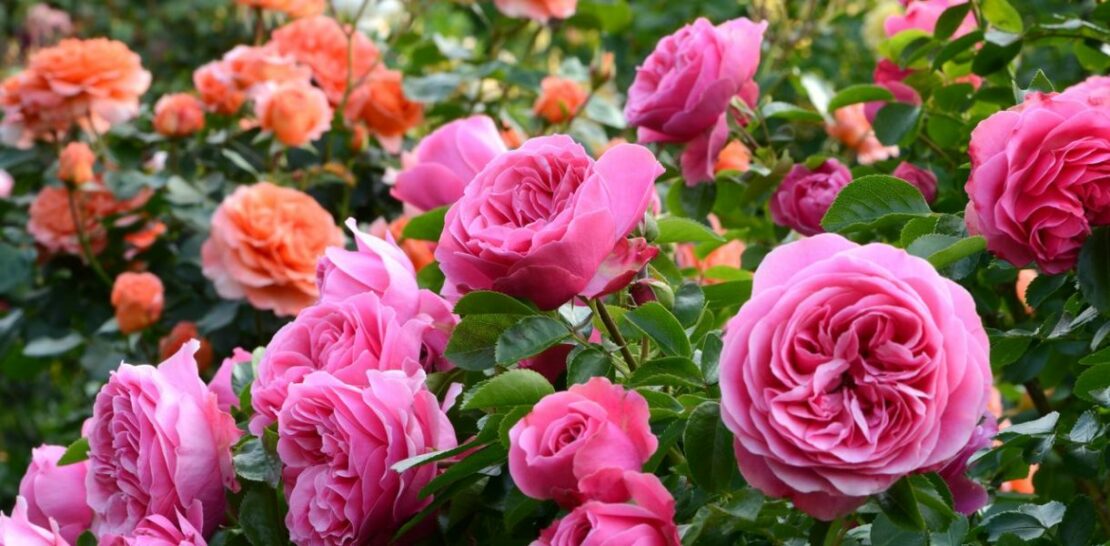Every gardener dreams of having a stunning garden, filled with vibrant, healthy roses that are the envy of the neighborhood.
Achieving this goal, however, often seems like a daunting task, especially for those who are new to rose gardening or have struggled with maintaining the health and vigor of their roses in the past.
Fear not, fellow gardeners!
This comprehensive guide will provide you with the essential tips and tricks needed to cultivate a garden full of beautiful, healthy roses.
By following these five simple steps, you will be well on your way to creating a breathtaking rose garden that will be admired by all who see it.
1. Choose the Right Roses for Your Garden
Before you can begin to grow beautiful, healthy roses, you must first select the right varieties for your garden. This may seem like a simple task, but with the vast array of roses available, it can quickly become overwhelming.
Consider the following factors when choosing your roses:
- Climate: Your geographic location and climate play a significant role in determining which roses will thrive in your garden. Some roses are more cold-hardy, while others require a warmer climate to grow and bloom properly. Be sure to research the specific needs of each variety before making your decision.
- Space: Take into account the space available in your garden. Some rose varieties can grow quite large, while others remain more compact. Ensure that you have adequate space for the mature size of the roses you choose.
- Color and Fragrance: Roses come in a wide range of colors and fragrances, so choose varieties that appeal to your personal preferences and complement your garden’s overall design.
- Disease Resistance: Selecting disease-resistant roses will minimize the need for chemical treatments and make it easier to maintain healthy plants.
By carefully considering these factors and selecting the appropriate rose varieties, you will set the foundation for a successful rose garden.
2. Provide Optimal Growing Conditions
Once you have chosen the right roses for your garden, it’s time to focus on creating the ideal environment for them to flourish. A healthy rose garden starts with healthy soil, appropriate watering, and the right amount of sunlight.
- Soil: Roses require well-draining soil that is rich in organic matter. Amend your soil with compost or other organic materials to improve its texture and nutrient content. A soil pH between 6.0 and 6.5 is ideal for roses.
- Watering: Consistent and deep watering is crucial for healthy rose growth. Water your roses at the base of the plant, keeping the foliage dry to prevent disease. Provide about 1 inch of water per week, either through rainfall or supplemental watering.
- Sunlight: Roses need at least 6 hours of direct sunlight per day in order to bloom and grow properly. Choose a planting location that receives the necessary sunlight, and ensure that your roses aren’t shaded by surrounding plants or structures.
By providing the optimal growing conditions for your roses, you will encourage strong, healthy plants that are more resistant to pests and diseases.
3. Master the Art of Pruning
Pruning is a critical component of maintaining a healthy and beautiful rose garden. Proper pruning not only keeps your roses looking their best but also promotes new growth, improves air circulation, and reduces the risk of disease.
There are several steps to successful rose pruning:
- Timing: The best time to prune your roses is in the early spring, just as the buds begin to swell. This will encourage new growth and a strong flush of blooms.
- Tools: Use clean, sharp bypass pruners to ensure clean cuts and minimize damage to the plant. Sterilize your pruners between plants to prevent the spread of disease.
- Technique: Remove dead, damaged, or diseased canes, cutting them back to healthy wood. Prune to open up the center of the plant, allowing for better air circulation. Cut back any weak, spindly growth, as well as any crossing or rubbing canes. Make your cuts at a 45-degree angle, about 1/4 inch above an outward-facing bud.
- Maintenance: Throughout the growing season, routinely remove any spent blooms and deadhead your roses to encourage continuous blooming. Also, keep an eye out for any diseased or damaged canes that may need to be removed.
By mastering the art of pruning, you will not only improve the overall health and appearance of your roses but also set them up for a season of abundant, beautiful blooms.
4. Feed Your Roses Well
Like all living things, roses require proper nutrition in order to grow and thrive. Providing your roses with the necessary nutrients will result in stronger plants, more vibrant blooms, and increased resistance to pests and diseases.
The key elements of rose nutrition include:
- Nitrogen: Nitrogen is essential for healthy foliage and overall plant growth. A balanced, slow-release fertilizer that contains nitrogen will provide your roses with the necessary nutrients throughout the growing season.
- Phosphorus: Phosphorus is crucial for strong root development and improved flowering. Look for a fertilizer that contains a high percentage of phosphorus, and apply it in the spring and fall to support the development of new growth and blooms.
- Potassium: Potassium helps to improve overall plant health and resistance to diseases and pests. It also aids in the production of sturdy stems and vibrant blooms. Choose a fertilizer that contains potassium, and apply it according to the product’s recommended schedule.
- Micronutrients: Roses also require small amounts of micronutrients, such as iron, magnesium, and manganese, for optimal growth and health. Look for a fertilizer that includes these essential micronutrients, and follow the recommended application guidelines.
Remember, over-fertilizing can be just as harmful as under-fertilizing, so always follow the recommended application rates and schedules for your specific fertilizer product. By feeding your roses well, you will ensure that they have the necessary nutrients to produce an abundance of healthy, beautiful blooms.
5. Keep Pests and Diseases at Bay
No matter how carefully you tend to your rose garden, pests and diseases can still pose a threat to the health and beauty of your roses. However, by implementing a few proactive measures and promptly addressing any issues that arise, you can significantly reduce the risk of damage to your plants.
Keep your rose garden healthy and pest-free with these strategies:
- Prevention: Start with disease-resistant rose varieties and maintain a clean, well-tended garden. Remove fallen leaves and debris, as they can harbor pests and diseases. Practice proper pruning techniques to improve air circulation and reduce the risk of disease.
- Monitoring: Regularly inspect your roses for signs of pests or diseases, such as discolored leaves, deformed growth, or the presence of insects. Early detection is key to minimizing damage and preventing the problem from spreading.
- Control: If you discover a pest or disease issue, take prompt action to address it. Remove and dispose of any affected plant material, and treat the problem with the appropriate method, whether it be a targeted pesticide, fungicide, or biological control.
- Education: Familiarize yourself with the common pests and diseases that affect roses in your area, and learn how to identify and treat them effectively. This knowledge will empower you to protect your garden and ensure the continued health and beauty of your roses.
By following these five essential tips for a beautiful, healthy rose garden, you will be well on your way to cultivating a stunning oasis that will delight and inspire for years to come. With careful planning, proper care, and a commitment to nurturing your roses, you can unlock the secret to a sumptuous garden that will be the envy of all who see it.




